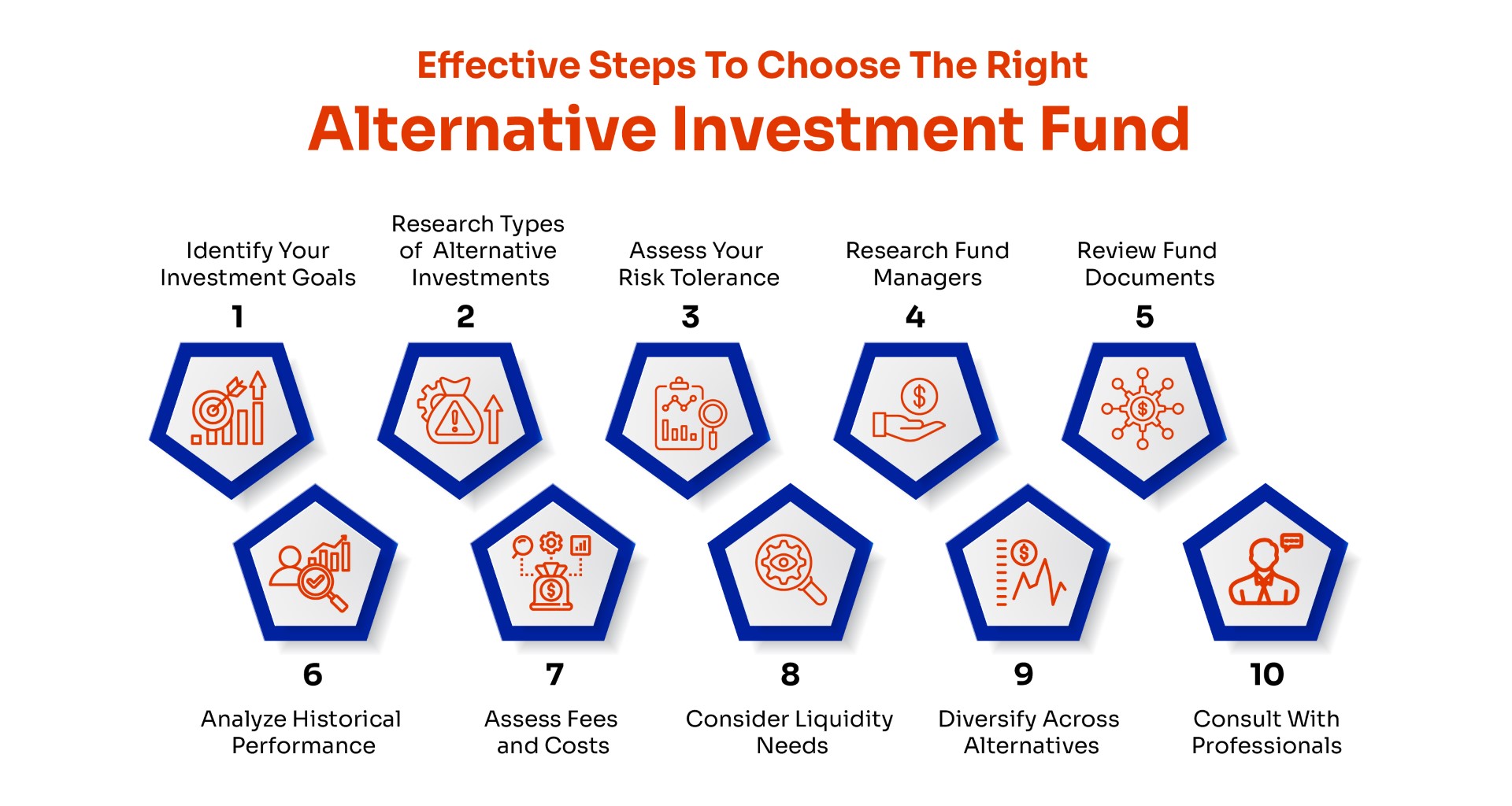Introduction
Alternative investments, such as real estate, private equity, and hedge funds, can help investors diversify their portfolios and potentially enhance returns. However, choosing the right alternative investment fund can be challenging, given the wide range of options available and the complex nature of these investments.

Step 1: Understand Your Investment Goals and Risk Tolerance
The first step in choosing the right alternative investment fund is to understand your investment goals and risk tolerance. Are you looking for income, capital appreciation, or both? What is your time horizon? How much risk are you willing to take? Alternative investments can vary widely in terms of risk and return potential, so it’s important to choose a fund that aligns with your goals and risk tolerance.
Step 2: Research Different Types of Alternative Investments
There are many different types of alternative investments, each with its own unique characteristics and risks. Here is a brief overview of some of the most common types:
- Real estate:
Real estate can be a good way to generate income and capital appreciation over the long term. However, it’s important to note that real estate is an illiquid asset, meaning it can be difficult to sell quickly. - Private equity:
Private equity funds invest in private companies that are not publicly traded. Private equity can offer the potential for high returns, but it’s also a very risky investment. - Hedge funds:
Hedge funds use a variety of investment strategies to generate returns, including both long and short positions. Hedge funds can be complex and expensive investments, but they can also offer the potential to mitigate risk and generate returns in all market conditions. - Commodities:
Commodities are physical goods such as oil, gold, and agricultural products. Commodities can be a good way to hedge against inflation, but they are also volatile investments.
Step 3: Assess Your Risk Tolerance
Alternative investments can be very risky, so it’s important to assess your risk tolerance before investing. If you’re not comfortable losing money, alternative investments may not be right for you. It’s important to consult with a trusted financial service provider like Chanakya Opportunities AIF Fund to help you determine your risk profile.
Step 4: Research Fund Managers
The quality of the fund manager is crucial when investing in alternative investments. Look for a fund manager with a proven track record in the specific asset class you’re interested in. Research their experience, investment strategy, and performance history. Consider factors like fees and their alignment with your investment objectives.
Step 5: Review Fund Documents
Carefully review the fund’s offering documents, including the prospectus, private placement memorandum, and partnership agreement. These documents provide insights into the fund’s strategy, fee structure, and any restrictions or liquidity terms.
Step 6: Analyze Historical Performance
Evaluate the fund’s historical performance, but keep in mind that past performance is not indicative of future results. Look for consistency in returns and consider how the fund has performed during various market conditions.
Step 7: Assess Fees and Costs
Alternative investment funds can have complex fee structures. Understand all fees involved, including management fees, performance fees, and expenses. High fees can significantly impact your overall returns.
Step 8: Consider Liquidity Needs
Alternative investments often come with longer lock-up periods and less liquidity compared to traditional investments. Assess your liquidity needs and determine if you can afford to have your capital tied up for an extended period.
Step 9: Diversify Across Alternatives
Avoid putting all your alternative investments in one basket. Diversify across different alternative asset classes and fund managers to spread risk. A mix of real estate, private equity, and other alternatives can help reduce portfolio volatility.
Step 10: Consult with Professionals
Consider consulting with financial advisors, attorneys, or accountants who specialize in alternative investments. They can provide valuable insights, help you navigate regulatory requirements, and ensure your investments align with your overall financial plan.
Conclusion
Choosing the right alternative investment fund can be a complex process, but it’s important to take the time to do your research and choose a fund that aligns with your investment goals and risk tolerance. By following the steps outlined above, you can increase your chances of success in the alternative investment market.
Need help with the 10th step? We can help!
Chanakya Fund Trust AIF is a leading financial service provider in India committed to helping Indian and foreign investors build profitable investment portfolios.
Our team of experienced financial professionals delicately analyzes the market and provides comprehensive guidance and insights to prepare the growth-focused portfolio and choose the right Alternative Investment Fund.














